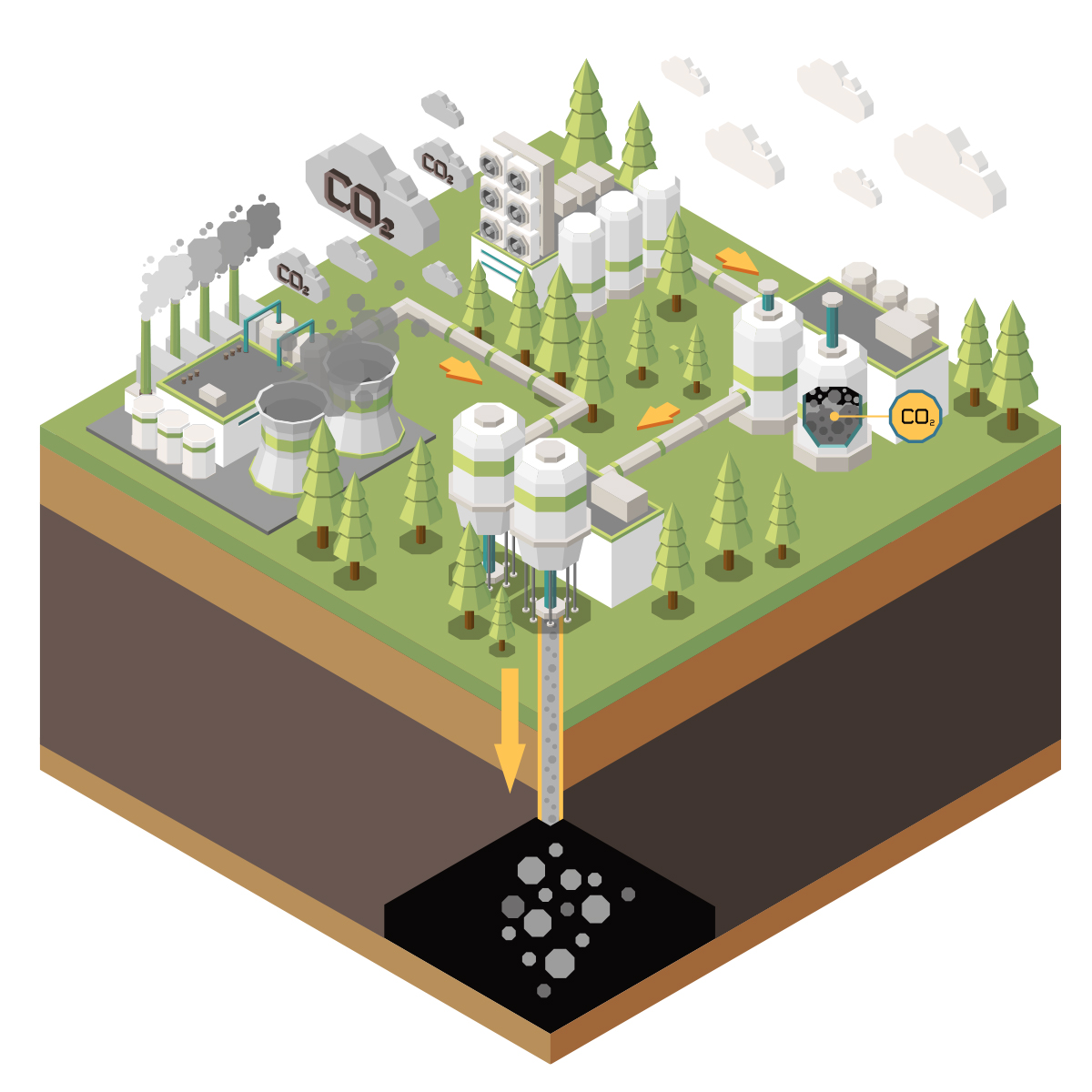carbon capture and storage materials
🌐
Public
Technology Title
Carbon Capture and Storage Materials"
Carbon Capture and Storage Materials"
Project Title
carbon capture and storage materials
carbon capture and storage materials
Category
Chemistry
Chemistry
Short Description
carbon capture and storage materials
carbon capture and storage materials
Long Description
Carbon capture and storage (CCS) materials are crucial for reducing carbon dioxide (CO2) emissions from industrial sources and power plants. The process involves capturing CO2 from flue gas emissions or directly from the air, followed by transportation and storage in geological formations. The most common CCS materials can be categorized into several types: 1. **Adsorbents**: These materials have high surface areas and selectively capture CO2 molecules through physical or chemical interactions. Common adsorbents include zeolites, activated carbons, metal-organic frameworks (MOFs), and covalent organic frameworks (COFs). MOFs and COFs have garnered significant attention due to their tunable pore sizes and high CO2 adsorption capacities.2. **Absorbents**: These materials use a liquid solution to capture CO2 through chemical reactions. The most widely used absorbents are amines, which react with CO2 to form stable compounds. Other absorbents include ionic liquids and aqueous solutions of potassium carbonate.3. **Membranes**: These materials selectively separate CO2 from other gases through dense films that allow CO2 to pass through while blocking other gases. Membrane materials can be made from polymers, ceramics, or metals and are often used in hollow fiber or spiral wound configurations.4. **Solid sorbents**: These materials capture CO2 through chemical reactions that form stable carbonates. Calcium hydroxide, calcium oxide, and lithium orthosilicate are examples of solid sorbents that can be regenerated for repeated use.The selection of CCS materials depends on various factors, including the CO2 concentration, temperature, and pressure of the gas stream, as well as the desired capture efficiency and cost. Researchers continue to develop new materials with improved performance, stability, and affordability to support large-scale CCS deployment.CCS materials face several challenges, including durability, scalability, and cost. The materials must withstand the corrosive effects of CO2 and other gases, as well as high temperatures and pressures. Additionally, the materials should be abundant and inexpensive to minimize the overall cost of CCS.Despite these challenges, CCS materials have the potential to play a critical role in reducing greenhouse gas emissions and mitigating climate change. Ongoing research and development are focused on improving the performance and cost-effectiveness of CCS materials, as well as exploring new applications and technologies for CCS.
Carbon capture and storage (CCS) materials are crucial for reducing carbon dioxide (CO2) emissions from industrial sources and power plants. The process involves capturing CO2 from flue gas emissions or directly from the air, followed by transportation and storage in geological formations. The most common CCS materials can be categorized into several types: 1. **Adsorbents**: These materials have high surface areas and selectively capture CO2 molecules through physical or chemical interactions. Common adsorbents include zeolites, activated carbons, metal-organic frameworks (MOFs), and covalent organic frameworks (COFs). MOFs and COFs have garnered significant attention due to their tunable pore sizes and high CO2 adsorption capacities.2. **Absorbents**: These materials use a liquid solution to capture CO2 through chemical reactions. The most widely used absorbents are amines, which react with CO2 to form stable compounds. Other absorbents include ionic liquids and aqueous solutions of potassium carbonate.3. **Membranes**: These materials selectively separate CO2 from other gases through dense films that allow CO2 to pass through while blocking other gases. Membrane materials can be made from polymers, ceramics, or metals and are often used in hollow fiber or spiral wound configurations.4. **Solid sorbents**: These materials capture CO2 through chemical reactions that form stable carbonates. Calcium hydroxide, calcium oxide, and lithium orthosilicate are examples of solid sorbents that can be regenerated for repeated use.The selection of CCS materials depends on various factors, including the CO2 concentration, temperature, and pressure of the gas stream, as well as the desired capture efficiency and cost. Researchers continue to develop new materials with improved performance, stability, and affordability to support large-scale CCS deployment.CCS materials face several challenges, including durability, scalability, and cost. The materials must withstand the corrosive effects of CO2 and other gases, as well as high temperatures and pressures. Additionally, the materials should be abundant and inexpensive to minimize the overall cost of CCS.Despite these challenges, CCS materials have the potential to play a critical role in reducing greenhouse gas emissions and mitigating climate change. Ongoing research and development are focused on improving the performance and cost-effectiveness of CCS materials, as well as exploring new applications and technologies for CCS.
Image


Tags
Third Choice
Third Choice
Email
Anu@yopmail.com
Anu@yopmail.com
